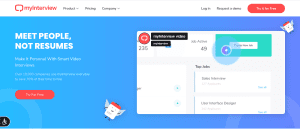
Earlier this year, it was clear to see how the shift from a client-driven market to a candidate-driven market had impacted the way businesses recruited new talent.
The so-called ‘Great Resignation’ of 2021 saw a record number of people leaving their jobs and reconsidering their career paths in the wake of COVID-19 — with the number of job vacancies hitting a record high between July and September 2021 due to post-pandemic reopening and Brexit-related labor shortages.
As a result, successfully targeting and onboarding ‘passive’ candidates — people already in employment who are not actively searching for a new job but may be persuaded to change roles — will continue to play a significant part in recruitment strategies for 2022.
The benefits of hiring passive candidates
A recent survey revealed that 69% of workers are ready to move jobs, with 24% planning to do so in the next few months. This reshuffle will impact almost every industry and cost businesses large sums in lost productivity and onboarding processes. For example, if just a sixth of the UK’s 275,000 accountants chose to leave their companies, it would cost firms upwards of a billion pounds in lost productivity alone.
Passive candidates make up 70% of the global workforce. As a result, having an effective strategy for targeting such candidates is crucial for businesses hoping to fill skills gaps and stand out in the increasingly competitive job market. Being approached directly by employers makes passive candidates feel respected and valued, increasing their enthusiasm for a role. They are also more likely to take their time deciding whether or not to join a new company and are, therefore, more likely to stay — boosting retention and company reputation and making it easier to attract more talent.
Since they already possess a proven set of skills before starting a new job, passive candidates are typically 17% less likely to require skills development. So, less time and resources are needed to train them, offering a faster return on investment for the employer and an easier transition for the employee. Plus, research has found that passive candidates are 120% more likely to want to make an impact in their new position, bringing with them the contacts and knowledge that will help to upskill existing teams and springboard businesses into the next stage of growth.
Five top tips for targeting passive candidates
1. Keep doing your research
To find out what it would take for a top candidate to leave the comfort of their position to join your company, you will have to take the time to get to know them.
Taking a personal approach is vital, as the top candidates are likely to have multiple other companies vying for their attention. As such, researching candidates to learn their work history, experience and motivations will be vital in conveying your professionalism, attention to detail, and position in the industry, as well as developing the candidate’s interest in your company.
2. Revisit previous candidates and contacts
Have you ever considered that your perfect candidate may be lurking in your existing databases? Somebody who was not quite experienced enough to secure a role in your team a few years ago may now be the perfect fit.
Plus, they will already be familiar with your company as they were once attracted to a position within your organization, making it even easier to minimize the competition from other interested parties.
3. Build a referral program
There is more to a competitive job offer than an attractive salary. Company culture, flexibility, and benefits are other contributing factors, and who better to provide a trustworthy recommendation than an existing employee?
One survey concluded that 78% of recruiters find their best-quality candidates through referrals. So, leveraging professional networks and incentivizing staff to bring in new talent with a referral program can help to expedite the recruitment process.
4. Work on your online presence
As digitization continues to sweep the globe, it is becoming increasingly important to establish a virtual brand — or risk planting doubts in the minds of prospective candidates about the legitimacy of your business.
Boosting your online presence could involve starting a company blog, upgrading your website, or developing a social media strategy. By sharing industry insights, company news, and promoting relevant events and campaigns online, you can cultivate a following, gain visibility, showcase company culture and, ultimately, attract passive candidates who may not otherwise be exposed to your organization.
5. Refine hybrid working policies
In the post-COVID era, it appears that hybrid working is here to stay. In fact, more than half of workers questioned in the EY 2021 Work Reimagined Employee Survey said they would consider leaving their job in favor of one that offers flexible working after the pandemic.
But it is not enough to make a vague reference to flexibility in a job offer. Now that businesses are no longer in crisis mode, setting expectations for working hours and availability is key to the success of a hybrid working model and significantly increases the probability of high levels of engagement and wellbeing — boosting employee satisfaction and retention as a result.
By Julie Mott, Managing Director, Howett Thorpe.




